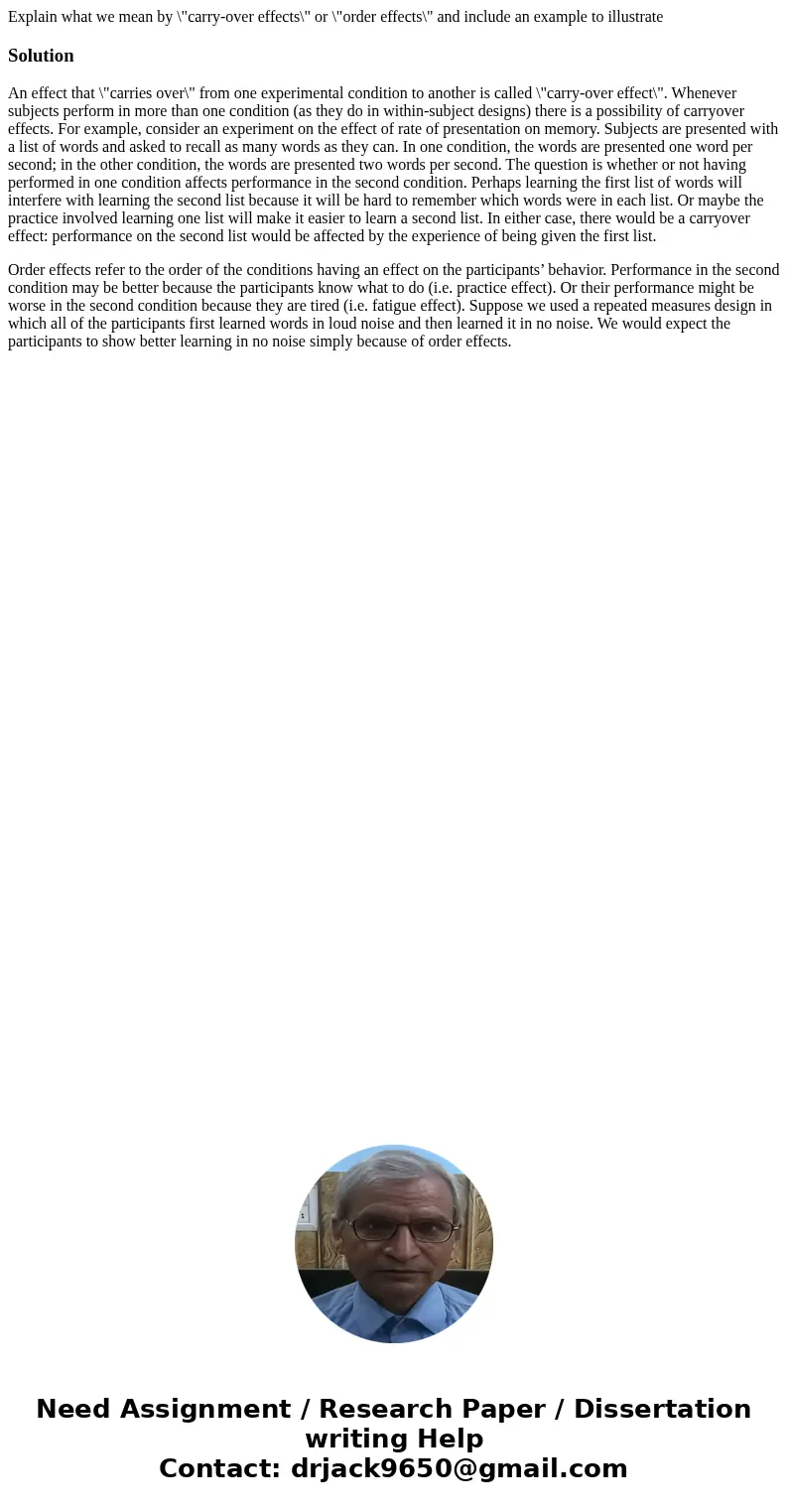Explain what we mean by carryover effects or order effects a
Explain what we mean by \"carry-over effects\" or \"order effects\" and include an example to illustrate
Solution
An effect that \"carries over\" from one experimental condition to another is called \"carry-over effect\". Whenever subjects perform in more than one condition (as they do in within-subject designs) there is a possibility of carryover effects. For example, consider an experiment on the effect of rate of presentation on memory. Subjects are presented with a list of words and asked to recall as many words as they can. In one condition, the words are presented one word per second; in the other condition, the words are presented two words per second. The question is whether or not having performed in one condition affects performance in the second condition. Perhaps learning the first list of words will interfere with learning the second list because it will be hard to remember which words were in each list. Or maybe the practice involved learning one list will make it easier to learn a second list. In either case, there would be a carryover effect: performance on the second list would be affected by the experience of being given the first list.
Order effects refer to the order of the conditions having an effect on the participants’ behavior. Performance in the second condition may be better because the participants know what to do (i.e. practice effect). Or their performance might be worse in the second condition because they are tired (i.e. fatigue effect). Suppose we used a repeated measures design in which all of the participants first learned words in loud noise and then learned it in no noise. We would expect the participants to show better learning in no noise simply because of order effects.

 Homework Sourse
Homework Sourse